The boat drifts to a stop near some submerged trees, the river quiet and tranquil. For the moment.
“You ready for your first carp show?” asks Jim Lamer, director of the Illinois River Biological Station.
Lamer and fisheries ecologist Kris Maxson have brought me to this section of the Illinois River for a morning of electrofishing. I’ve been electrofishing in a number of habitats, from Idaho spring creeks to Louisiana bayou. I’m familiar with the stunned fish on the water’s surface when researchers survey the river with electric current. But Lamer promises a bit of a different experience today.
Maxson moves to the front of the boat, putting electrofishing gear in place. He nods at Lamer as the generator kicks on. And then: pandemonium.
All around me, silver carp leap into the air, a detonation of water and fins. One flies over my shoulder and lands with a thump in the boat. More carp keep leaping. I have my phone out but realize I’ve mainly just been gawking at the sheer number of fish. Carp, carp everywhere. The Carpocalypse.
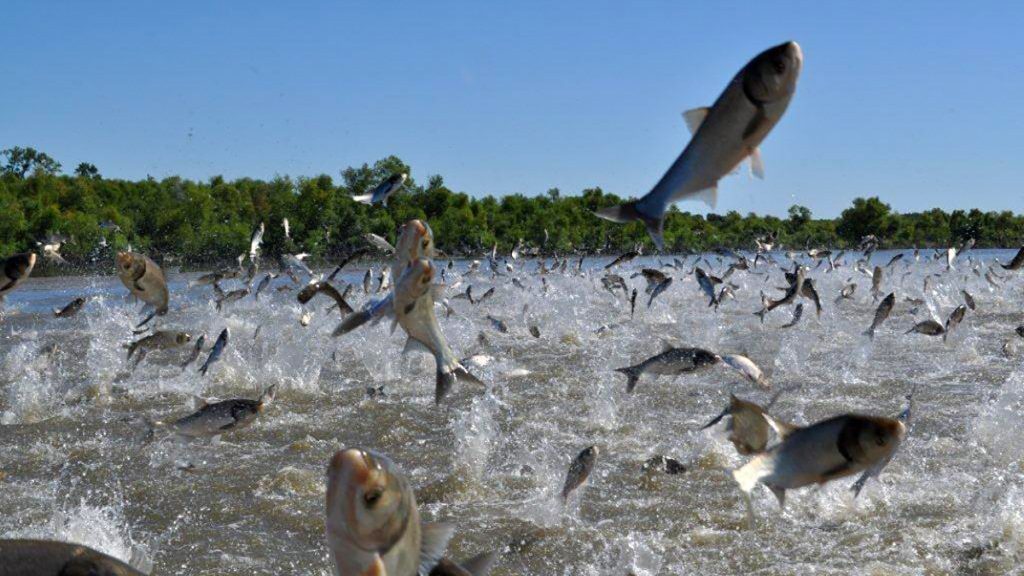
After 30 seconds, the jumping fades, leaving a few floaters on the surface that Maxson dips into a net. Lamer looks at me and laughs. “It’s always fun to see the looks of someone who’s seen the carp show for the first time,” he says. “It is one of those things that you have to see live to get a real sense of it. Photos and videos can’t do it justice.”
Many serious fish nerds come to this stretch of river to see the Asian carp invasion firsthand. It’s a spectacle at once spectacular and horrifying. This area has some of densest populations of the most notorious invasive fish.
And these fish are studied extensively. The Illinois River Biological Station, a part of the Illinois Natural History Survey, is one of the longest-running biological monitoring programs on the continent. Asian carp were first captured in the Illinois River in 1998. And then they spread and proliferated, like a fire raging up the river. Today, the central section of the Illinois River is home to more than 1,200 carp per kilometer.
“The novelty of jumping fish is completely gone for me,” says Lamer. “I’ve seen far too many carp.”
Here’s an overview of the Asian carp invasion and what it means for other freshwater fish and river ecosystems.
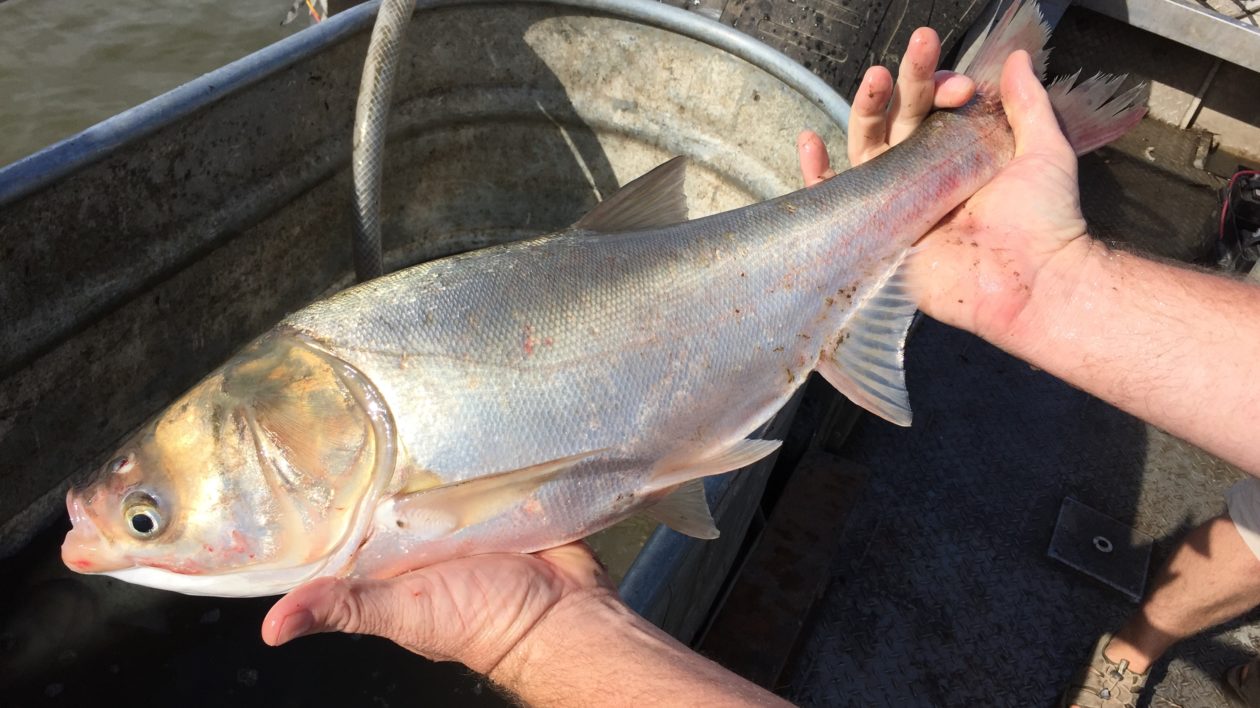
Anatomy of an Invasion
The invasive fish known collectively as Asian carp represent four species: silver, bighead, black and grass carp. Much of the focus has been on silver and bighead carp, which were intentionally imported to U.S. aquaculture facilities to control algae.
In a recurring invasive species story, the carp were difficult to contain. Fish farms flooded, releasing the carp into rivers and canals. That ability to jump aided the carp in clearing small dams and spreading rapidly.
They proliferated in the lower and middle Mississippi and many of its tributaries. In many waters, silver and bighead carp quickly became the dominant fish species.
Black carp were also imported to aquaculture facilities to control parasites. This species is fairly new and their spread (and potential for spread) needs more study. Black carp feed on mollusks, which makes it of particular concern as many Midwest rivers have imperiled native mussels.
Grass carp are established across the country and continue to be introduced to ponds and canals to control algae and aquatic vegetation. While any grass carp released are supposed to be sterile, that has not always proven to be the case.
Why Do Carp Jump?
The carp that famously jump are silver carp, which feed on zooplankton near the water’s surface. They are very sensitive to disturbance. A boat motor or even a flock of geese landing can make them jump as high as 10 feet in the air.
This jumping habit has undoubtedly made the silver carp a media star (or perhaps, villain). In particular, their jumping often results in them vaulting onto boats, and even injuring boat passengers and water skiers.
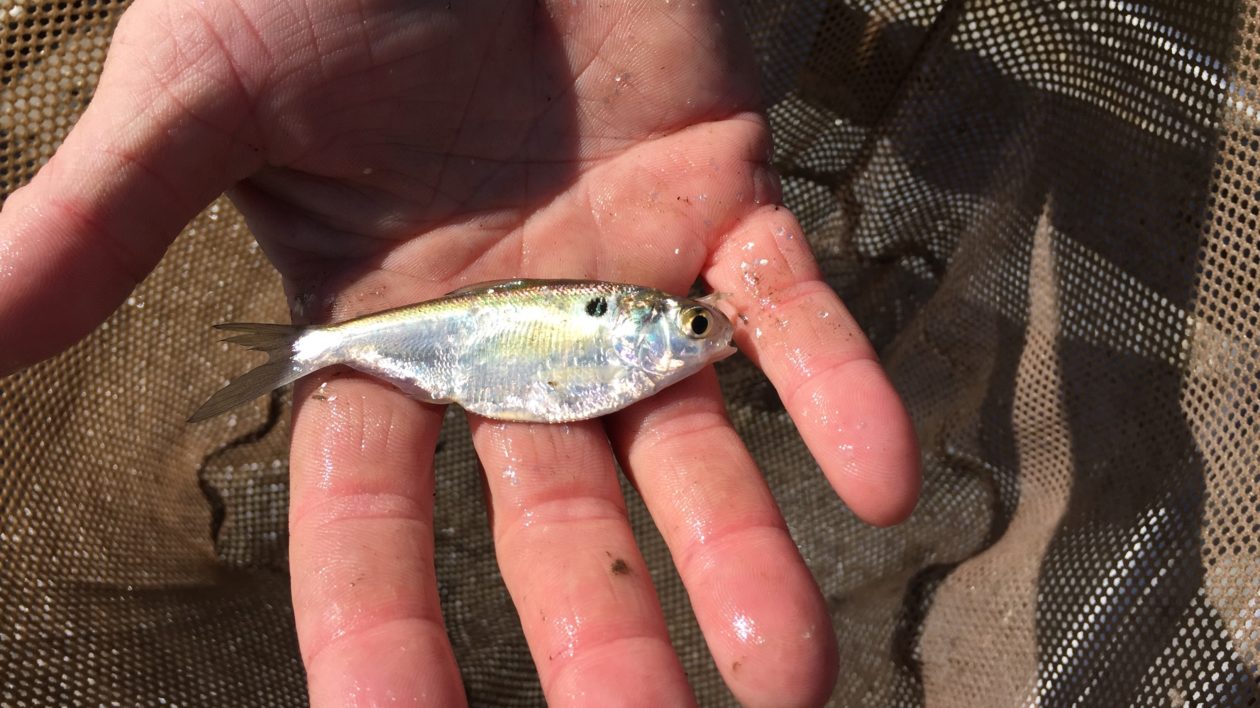
What Are The Impacts to Native Fish?
Of course, any fish with a population of 1,200 per river kilometer impacts the river ecosystem. The carp invasion has occurred quickly, so some impacts are speculation, but there are peer-reviewed papers. The Illinois River Biological Station has been monitoring the river for decades, so has the baseline data to make comparisons.
Silver and bighead carp feed on zooplankton, the foundation of the food chain. They are as such in direct competition with fish like gizzard shad, which are in turn forage fish for largemouth bass and a variety of other species.
Research published in the journal Biological Invasions showed that as Asian carp increased, gizzard shad and bigmouth buffalo (another native filter feeder) decreased, as did many “game” species. Longnose gar, a native predator, increased.
There have been other reported impacts including erosion of stream banks and reduction in water clarity, but some of these appear anecdotal. The huge increase in carp, though, has already significantly changed the fish composition on Midwest rivers.
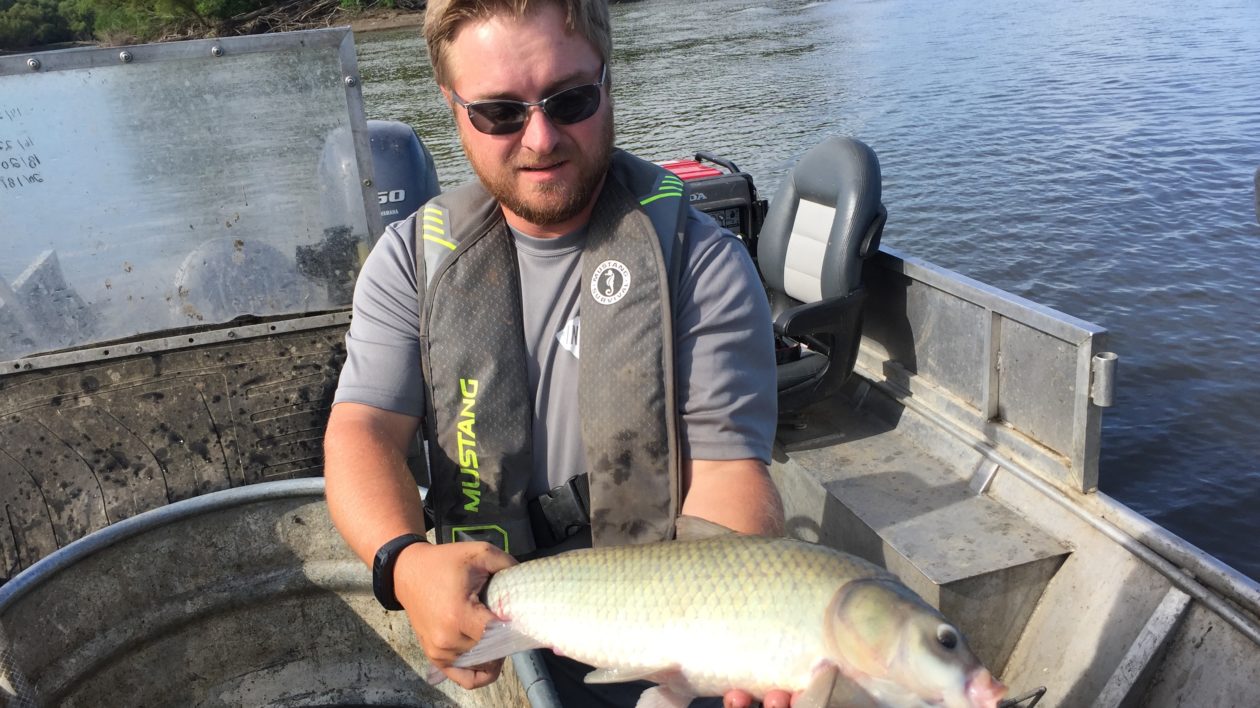
An Ounce of Prevention
The sight of thousands of jumping, invasive fish gets your attention. Freshwater conservationists, though, are focused elsewhere. Namely, they want to keep Asian carp out of waters where they don’t exist. That’s an easier task than trying to control existing carp populations.
Conservationists fear Asian carp reaching the Upper Mississippi River and the Great Lakes, which would likely compound this ecological tragedy. Researchers are deploying increasingly effective monitoring techniques, including sampling water for carp eDNA. The presence of a fish or small number of fish can be detected by environmental DNA (eDNA), although bird feces containing fish DNA can lead to carp detection where there are not any.
Conservationists are also testing a number of deterrents that repel or block the spread of carp. The Nature Conservancy’s Emiquon Preserve, a floodplain wetland located along the Illinois River near where I observed Asian carp, has emerged as a place to test deterrents.
Emiquon is a floodplain wetland where the Conservancy began restoration in 2007, as covered previously on Cool Green Science. In the project’s initial phases, some conservationists believed the wetland should be “naturally” reconnected to the river.
One of the arguments against such an approach was the prevalence of Asian carp. “If the river just flowed into the wetland, Asian carp would quickly inundate Emiquon,” says Doug Blodgett, director of river conservation for The Nature Conservancy in Illinois.
Instead, the Conservancy installed a state-of-the-art water control device to manage flows in and out of the preserve. “This also allows us to test methods that deter Asian carp, like the use of sound,” says Blodgett. “Acoustics disturb carp, and there is some evidence it keeps them from entering.”
There are silver and bighead carp swimming in Emiquon. Given their high numbers in the adjacent river, it would be nearly impossible to keep them entirely out. But monitoring can help managers evaluate the fish’s status and impacts. “Our ability to control water levels at Emiquon means that if Asian carp, or other non-native species, become too invasive, we can dry the preserve up and start again,” says Blodgett.
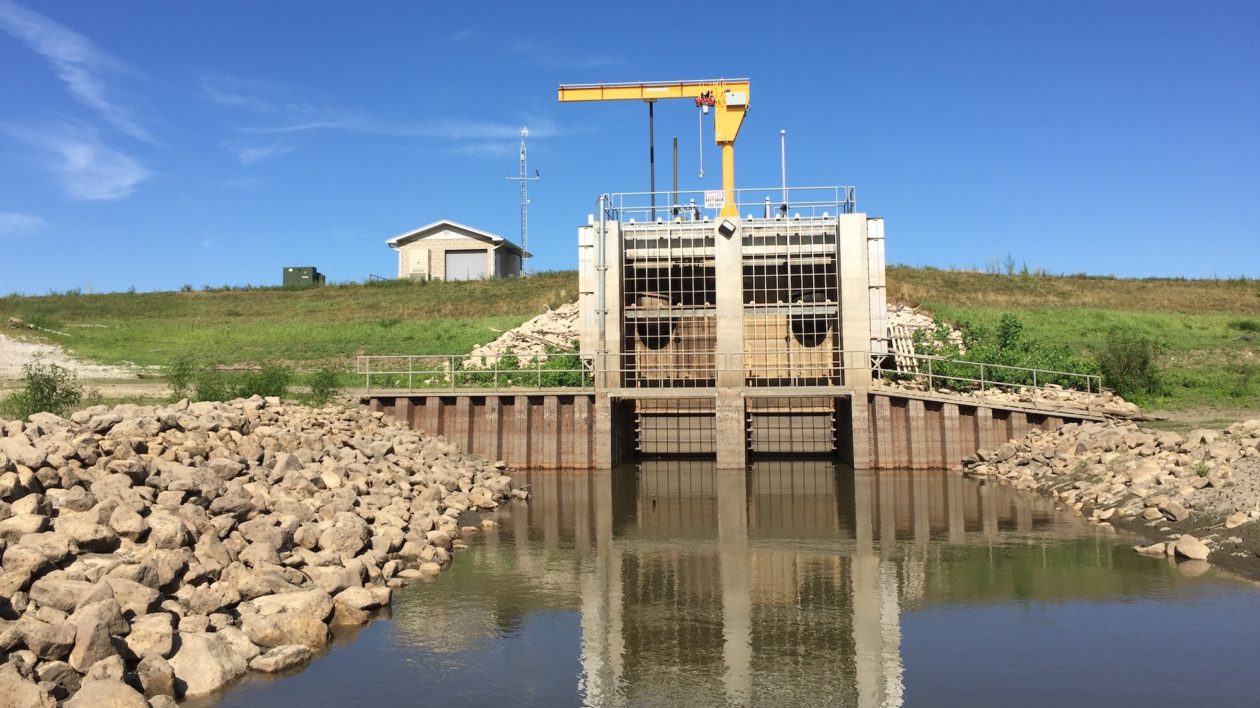
Can Carp Be Controlled?
The search for effective ways to reduce carp numbers has resulted in a number of scientific inquiries – and perhaps even more unscientific ones. With so many fish jumping, people want to help out.
Silver and bighead carp feed on plankton, which makes them difficult to catch with conventional fishing methods. I do have some friends who have had some success in certain waters, using green or chartreuse lures and flies. But this is an extremely niche activity.
Outdoor enthusiasts use a number of methods to catch them including snagging and bowfishing. These are promoted as carp control, but in reality they’re removing minuscule numbers of fish. The proliferation of bowfishing also means that native species – like bigmouth buffalo – are also targeted, even though these fish are slow growing.
There are periodic campaigns to get people to dine on carp. “If you can’t beat ‘em, eat ‘em,” is a common slogan. In the United States, the familiar (and non-native) common carp is a bottom feeder, and many consider this undesirable in a food fish. Asian carp are filter feeders but are still stuck with the undesirable reputation. However, in blind taste tests, consumers compared Asian carp favorably to other food fish.

And then there are what can charitably be called unconventional means of recreational carp control. There are carp rodeos where boats drive around and try to catch them in fishing nets. One Central Illinois carp hunting group includes water skiers who jab at silver carp with samurai swords or with hand-held spikes a la Marvel’s Wolverine.
This makes for dramatic (if disturbing) YouTube footage, but does little to stop the spread of carp.
According to Jim Lamer, commercial fishing with gill nets offers perhaps the best hope to make significant reductions in the Asian carp population. These fish are processed into liquid fertilizer and pet food. Netting may begin on Emiquon Preserve as early as this fall; the preserve’s excellent water quality means the fish will be suitable for human consumption. Commercial fishing methods are removing 4 to 8 million pounds of Asian carp per year from the Illinois River.
“The idea is that removing so many carp here reduces the pressure on the Great Lakes,” says Lamer. “The fish that are left may be more apt to stay rather than move into new habitat.”



Hi, we live in VA, and my children want to visit the carp fish jump show. I would like to have more information and how to get there. Thanks,
Remember cruelty is not necessary to address an invasive species and many of the methods listed here such as using swords meet that criteria. Fish are no longer plentiful and the carp are tasty, why not serve them up for dinner using humane ways to catch and process them.
As a retired fishery biologist, how about a large floating gill net or several regular gill nets stretched across the surface, then electroshock or use whatever other method to invoke them to leap to see if the gill net would be effective when they leap. Leaping gives opportunity for removal. And yeah, removing fish from gill nets does take a bit for sure. Invite anyone by permit to do likewise or any method and somehow use the removed fish for food/fertilizer/etc. as you are now doing, but hopefully on a larger scale. Glad they are not here (NH) but it’d certainly be a draw back to being a biologist again or volunteering to help removal if they were.
Hello. I disagree with this electrofishing. This is not a real fish man who sits on the bank with a baited hook and waits. To electro… the water so fish jump and you can just hold out your net is not right.
Reminds me of when I went to a lake with my dad to fish and all these men were standing around not fishing. A few minutes later, a truck pulls out and the guy unloads buckets of fish to restock the lake. These guys also had their nets out right under where the guy was unloading the fish. My dad was so disgusted, we left and never went back.
Years from now, we will read about no more carp.
I am disappointed nature conservancy.
The electrofishing is done by researchers to collect fish specimens. It is not done for recreational purposes. In fact, it is illegal to electrofish recreationally. Also, these Asian carp are highly invasive and have extreme effects on native fish species and the ecosystem. If there are no more carp years from now, it will be celebrated as a huge conservation success. Thanks for writing. Matt
Did you even read the article?
I too am disappointed. The objectives may be sound, but in recent years the Nature Conservancy has become more and more unethical and inhumane in its methodologies to rid habitats of unwanted species, baiting animals with poisons, spraying toxic chemicals, and even rounding up animals by the hundreds for mass slaughter if they stand in the way of a project.
Is this what you call “cool science”? Sending electric currents through a body of water filled with living organisms as a spectator sport is unethical, inhumane, and unnecessary. This is not legitimate research, it is not “cool”, and this is not the Nature Conservancy I joined 30 years ago. I am seriously reconsidering my charitable giving to this organization.
For this story, I joined the Illinois Natural History Survey, who sample Asian carp via electrofishing. This is a common survey technique for fisheries researchers. It is often used to tag fish to track migratory movements or gain information on habitat use. In this case, the survey uses it to gather information on a highly invasive fish. This is not a new technique. It has been used by conservationists and fisheries managers for many years as a legitimate research and conservation tool, not as a spectator sport. I first saw electrofishing used as a student at Pennsylvania’s Conservation Leadership School in 1987 and have written about it many times in my career as a conservation writer. Thanks for commenting. Matt
Why do I not see carp fish at the local grocery stores ? Fish here in the mid west seems to be pricier than red meat.